Abstract
In a marsh-breeding population of red-winged blackbirds, the sex ratio of offspring that survived to leave the nest varied with maternal age. Old mothers produced an excess of male fledglings, middle-aged mothers produced almost equal proportions of males and females, and young mothers produced nearly twice as many females as males. More males than females hatched from the eggs of old mothers, whereas among newly hatched progeny of middle-aged and young mothers the sex ratio did not differ from unity. The hatching rate of eggs of old mothers was unusually low, suggesting that the biased sex ratio of their hatchlings may have been caused by more frequent death of female embryos, although other possibilities can be imagined. Starvation of nestlings after hatching also affected the sex ratio among young that left the nest. When starvation occurred, it fell principally on young produced by the last and next-to-last eggs laid in the clutch. Because old mothers allocated relatively more energy to those eggs than to earlier-laid eggs, whereas young mothers apportioned energy equally to their eggs, few nestlings of old mothers but many nestlings of young mothers starved. Most nestlings that died were male. It followed that the male bias in sex ratio of progeny of old mothers did not change between hatching and nestleaving, but the ratio among progeny of young mothers shifted after hatching to a strong bias favoring females at nest-leaving.
Keywords: parental age, reproduction, offspring sex, population dynamics
Full text
PDF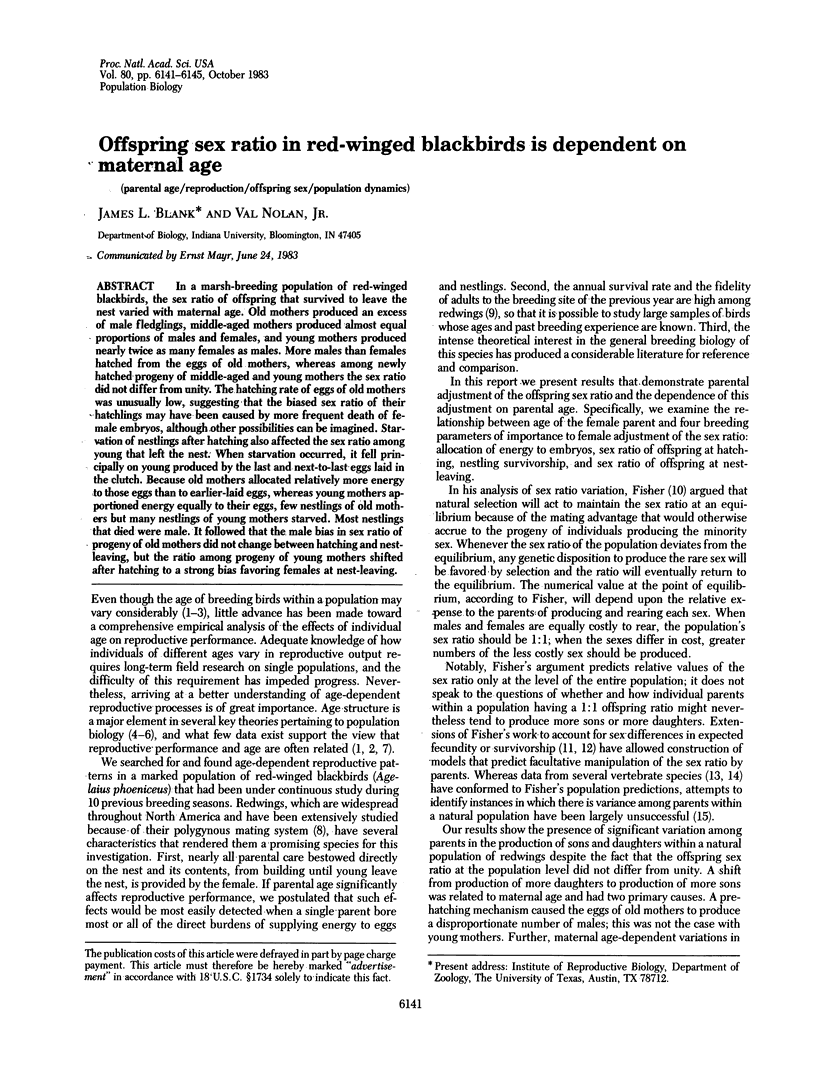
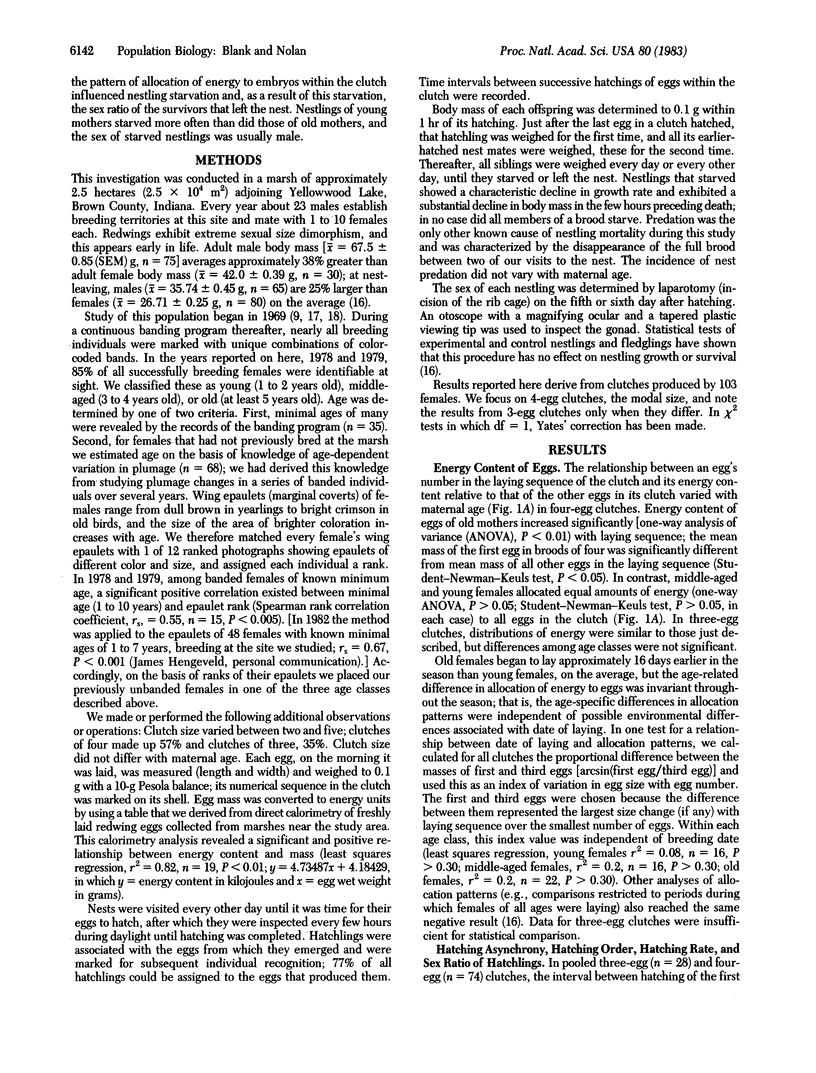
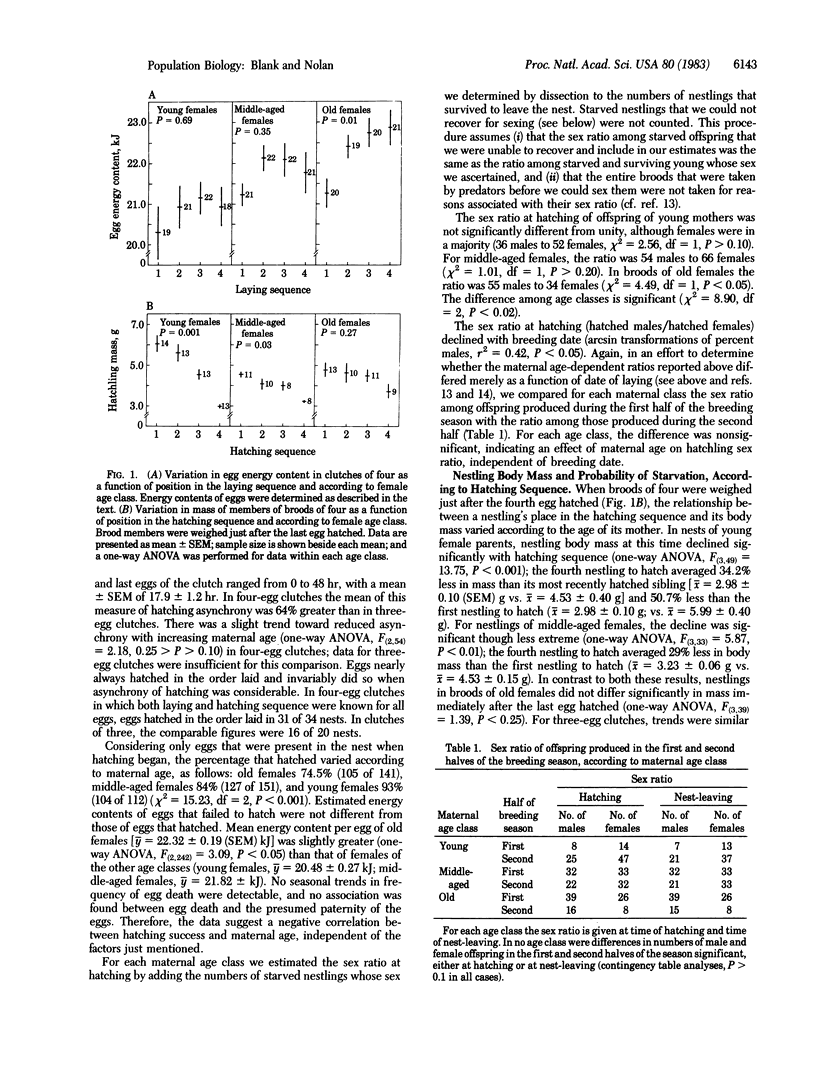
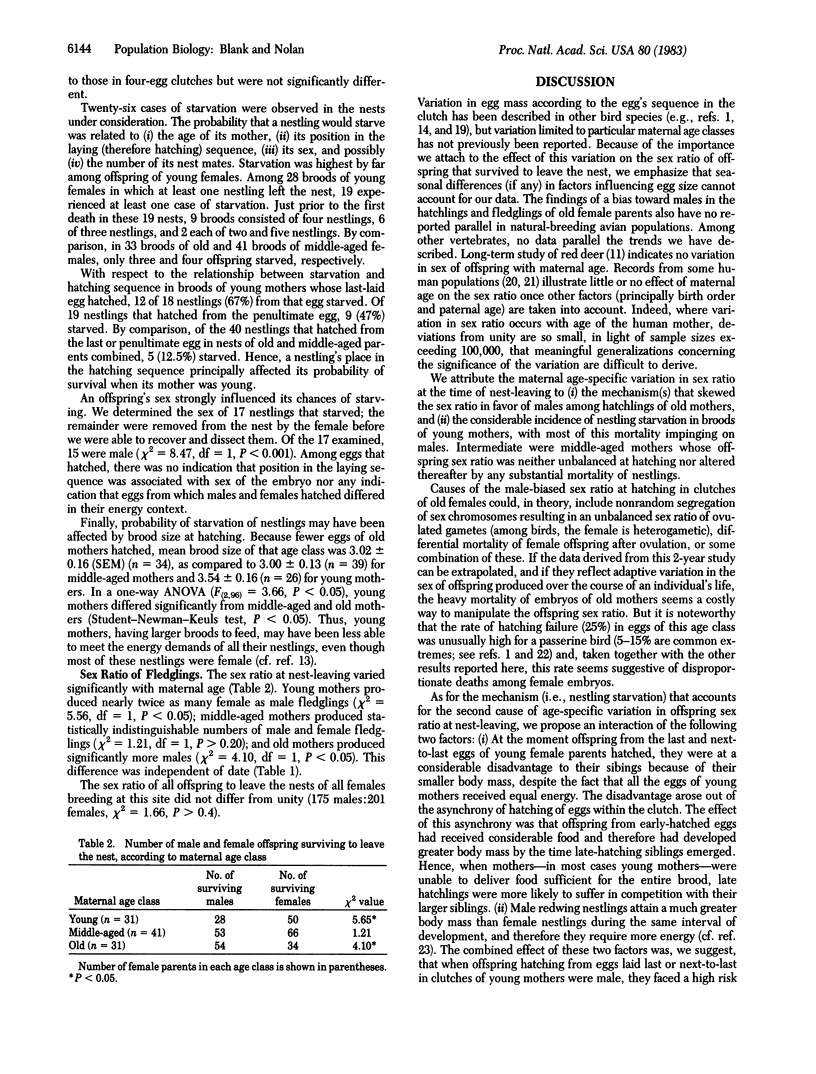
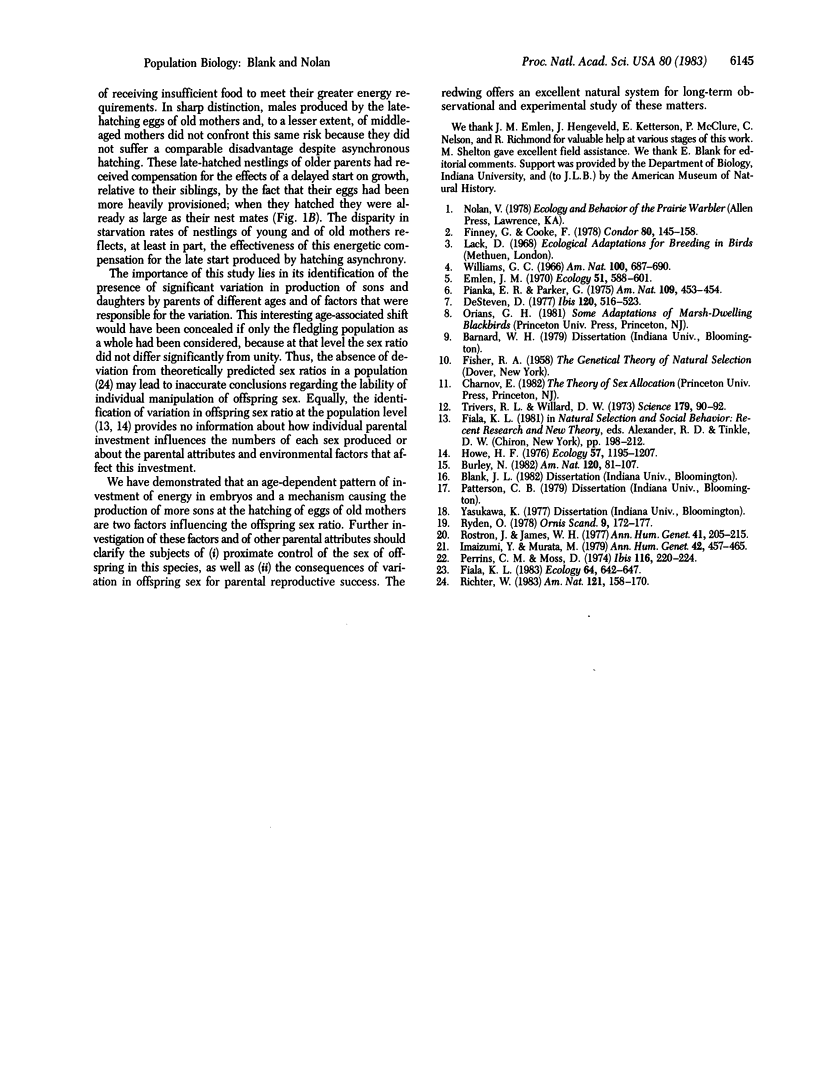
Selected References
These references are in PubMed. This may not be the complete list of references from this article.
- Imaizumi Y., Murata M. The secondary sex ratio, paternal age, maternal age and birth order in Japan. Ann Hum Genet. 1979 May;42(4):457–465. doi: 10.1111/j.1469-1809.1979.tb00679.x. [DOI] [PubMed] [Google Scholar]
- Rostron J., James W. H. Maternal age, parity, social class and sex ratio. Ann Hum Genet. 1977 Oct;41(2):205–217. doi: 10.1111/j.1469-1809.1977.tb01916.x. [DOI] [PubMed] [Google Scholar]
- Trivers R. L., Willard D. E. Natural selection of parental ability to vary the sex ratio of offspring. Science. 1973 Jan 5;179(4068):90–92. doi: 10.1126/science.179.4068.90. [DOI] [PubMed] [Google Scholar]


